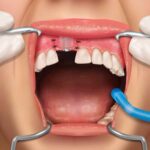If you’ve ever tried explaining a complex drug mechanism to someone outside your research team, you know the struggle. Even the most brilliant slide decks or journal papers sometimes fail to capture the dynamic story of how a drug works. That’s where Mechanism of Action (MoA) animation steps in — turning dense pharmacology into clear, engaging visual narratives.
I’ve worked with teams who spent years perfecting a molecule, only to find that investors, clinicians, or even regulatory reviewers struggled to grasp precisely what made it so groundbreaking. MoA animation changes that conversation.
Have a project to discuss? We’re just a click away.
What Is Drug MOA 3D Animation?
At its core, an MoA animation is a scientifically accurate, 3D or 2D animated visual that illustrates how a drug interacts with its target — be it a receptor, enzyme, cell, or an entire organ system. Think of it as watching a microscopic documentary: you see molecules binding, signalling pathways activating (or blocking), and physiological effects unfolding.

Unlike static images, an animation can:
Show the sequence of events over time
Zoom in to a molecular level and back out to systemic effects
Highlight specific pathways or side effects
Simplify without oversimplifying
Benefits of Using MOA 3D Animation in Pharma and Healthcare
Pharmaceutical R&D is heavy on complexity. New drugs target novel proteins, modulate immune responses, or work synergistically with other compounds. Explaining these mechanisms verbally can leave room for misunderstanding. But when stakeholders can see the process unfold, clarity skyrockets.
I remember a biotech startup I consulted for — their monoclonal antibody’s mode of action was brilliant but difficult to explain. In investor meetings, eyes glazed over halfway through their slide deck. Once we created a concise MoA animation, the same investors started leaning in, asking insightful follow-up questions. That’s the power of visualisation.
Some key benefits:
Engagement: Moving visuals hold attention better than static charts.
Retention: People remember what they see far more than what they read.
Consistency: Every audience gets the same, precise explanation.
Accessibility: Complex science becomes understandable without losing accuracy.
How Pharmaceutical Companies Use 3D Medical Animation for MOA
1. Drug Launch Marketing
When a new therapy hits the market, physicians and healthcare providers need to understand how it works. MoA animations make training materials, medical conference presentations, and e-detailing sessions far more impactful.
2. Investor Relations
Biotech and pharma rely on funding. A crisp MoA animation can convince investors that the science is sound — even if they’re not molecular biologists.
3. Regulatory Submissions
While agencies like the FDA or EMA primarily review written and clinical data, an MoA animation can supplement dossiers and clarify unique mechanisms.
4. Medical Education
Medical schools, CME courses, and training programs use MoA animations to teach pharmacology in a way that sticks.
5. Public Awareness Campaigns
Some drugs require patient education. A simplified version of an MoA animation can help patients understand why they need to take a medication consistently.
How Animation Studios Create Accurate and Compelling MOA 3D Animations
Creating an MoA animation isn’t just a matter of throwing some molecules into 3D software. It requires a blend of:
Scientific research (often reviewing primary literature, preclinical and clinical data)
Storyboarding (deciding the visual flow)
3D modelling and animation (down to molecular bonds if needed)
Medical review (ensuring scientific accuracy)
Narration and labelling (for clarity)
For example, in oncology drug MoA animations, you might need to show the tumour microenvironment, immune cell infiltration and checkpoint inhibition, all within a tight two-minute window. Keeping the science accurate while holding the viewer’s attention in that short span is no small task.
ROI of Drug MOA 3D Animation for Pharmaceutical Companies
Yes, MoA animations require investment — anywhere from a few thousand to tens of thousands of dollars, depending on complexity. But the return is measurable:
Shorter sales cycles with healthcare providers
Better comprehension in clinical trial recruitment
Higher investor confidence
Enhanced brand authority in competitive therapeutic areas
In most cases, the cost is negligible compared to the R&D budget of the drug itself.
How Drug MOA 3D Animation Will Shape the Future of Pharma Marketing
We’re starting to see interactive MoA platforms where viewers can control camera angles, zoom in on different pathways, or switch between “basic” and “expert” modes. VR and AR are also entering the picture, especially for surgical devices or complex biologics.
AI-assisted modelling is helping speed up production, but in medical animation, human oversight remains essential to ensure scientific accuracy.
Related Post: 3D Medical Animation Studios in Singapore
Final Thoughts
Pharmaceutical innovation doesn’t stop in the lab. If you can’t communicate how your therapy works, you risk losing opportunities — with physicians, investors, and even patients. MoA animations bridge that gap.
In my experience, the most effective MoA animations are those that respect the audience’s intelligence while making the science unmistakably clear. They’re not flashy marketing gimmicks. They’re precision storytelling tools for one of the most complex subjects in medicine.
So, the next time you prepare to present your breakthrough therapy, ask yourself: could they see what I’m saying? If the answer is no, it might be time to invest in an MoA animation.
If you’re looking for a high-quality 3D medical animation to illustrate a drug mechanism of action, we can help. Contact us for accurate, visually engaging 3D MoA animations that clearly explain complex drug mechanisms to any audience.
This article was developed with AI assistance and reviewed by Dhananjayan Nair for quality and accuracy.





